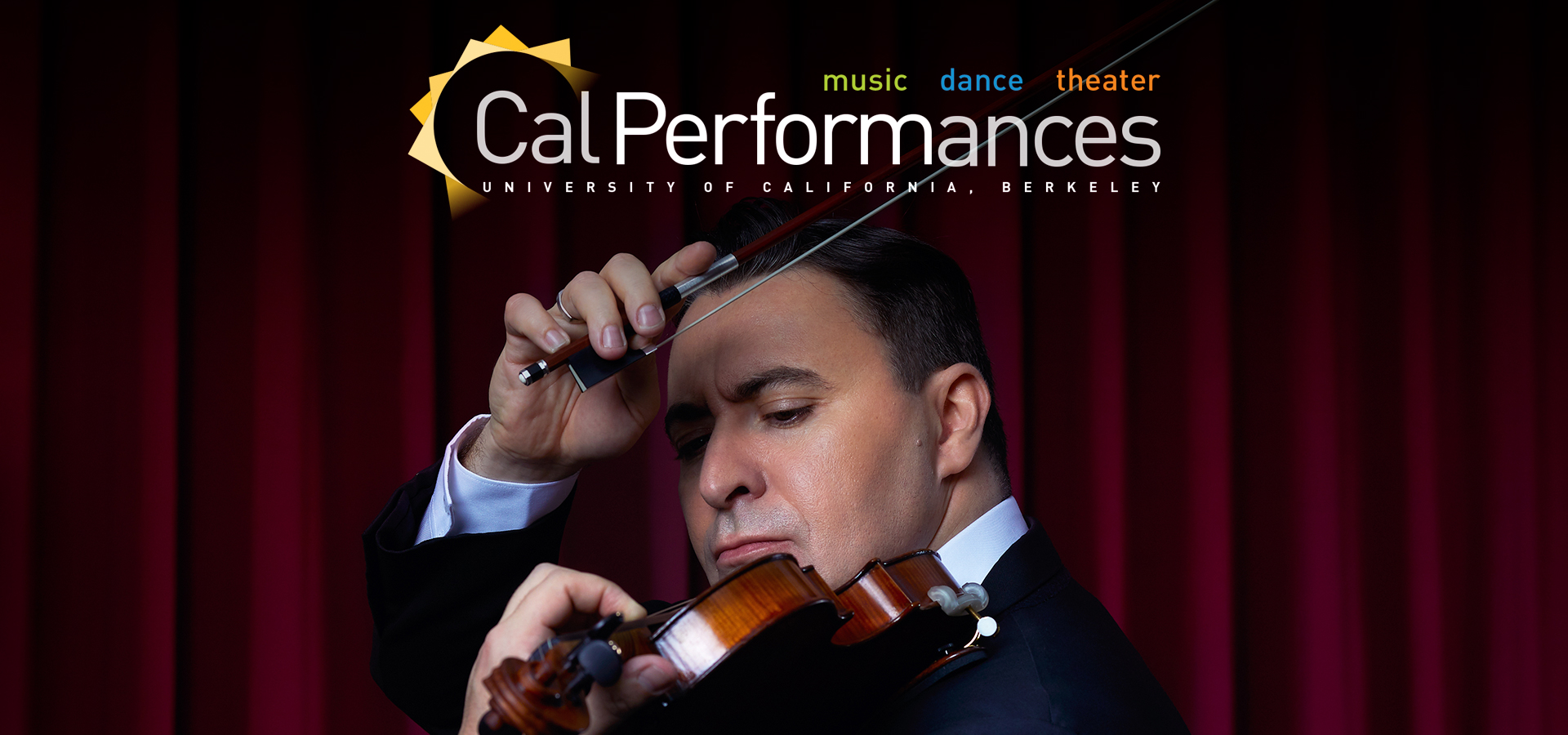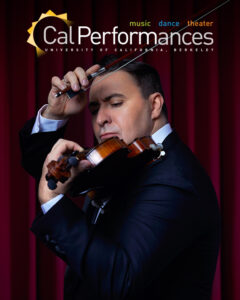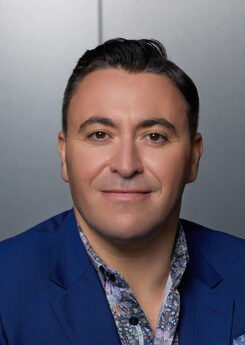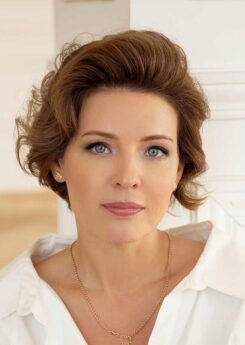Maxim Vengerov, violin
Polina Osetinskaya, piano
Friday, October 14, 2022, 8pm
Zellerbach Hall
This performance is made possible, in part, by Taube Philanthropies. Support for the presentation of Israeli artists is provided by The Sir Jack Lyons Charitable Trust.
Run time for this concert is approximately 2 hours, including intermission, but not including any possible encores.
From the Executive and Artistic Director
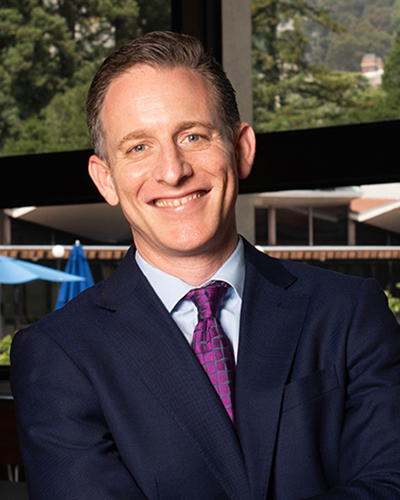
I couldn’t be happier to welcome you to this, one of the first programs of Cal Performances’ remarkable 2022–23 season. This month, we look forward to visits from gifted classical artists like violinist Maxim Vengerov and pianist Polina Osetinskaya; Baroque violinist Rachell Ellen Wong and her partners, cellist Coleman Itzkoff and harpsichordist David Belkovski; and harpsichordist and fortepianist Kristian Bezuidenhout. We’ll also welcome our own San Francisco Symphony back to UC Berkeley in a special concert especially appropriate for the Halloween season and featuring music director Esa-Pekka Salonen and piano soloist Bertrand Chamayou; as well as the brilliant Cloud Gate Dance Theatre of Taiwan with its breathtaking production of 13 Tongues. I’m proud to launch the season with programming that represents the finest in dance and classical music.
But this is just the start! From now until May 2023—when we close our season with the Bay Area premiere of Octavia E. Butler’s powerful folk opera Parable of the Sower and a highly anticipated recital with international dramatic soprano sensation Nina Stemme—we have a calendar packed with the very best in the live performing arts.
And what a schedule! More than 70 events, with highlights including the return of the legendary Vienna Philharmonic Orchestra under conductor Christian Thielemann (in his Bay Area debut); the beloved Mark Morris Dance Group in Morris’ new The Look of Love: An Evening of Dance to the Music of Burt Bacharach; the US premiere of revered South African artist William Kentridge’s astonishing new SIBYL; and a special concert with chamber music superstars pianist Emanuel Ax, violinist Leonidas Kavakos, and cellist Yo-Yo Ma. And these are only a few of the amazing performances that await you!
Illuminations programming this season will take advantage of Cal Performances’ unique positioning as a vital part of the world’s top-ranked public university. In the coming months, we’ll be engaging communities on and off campus to examine the evolution of tools such as musical instruments and electronics, the complex relationships between the creators and users of technology, the possibilities enabled by technology’s impact on the creative process, and questions raised by the growing role of artificial intelligence in our society.
This concept of “Human and Machine” has never been so pertinent to so many. Particularly over the course of the pandemic, the rapid expansion of technology’s role in improving communication and in helping us emotionally process unforeseen and, at times, extraordinarily
difficult events has made a permanent mark on our human history. Throughout time, our reliance on technology to communicate has—for better and worse—influenced how we understand others as well as ourselves. During this Illuminations season, we will investigate how technology has
contributed to our capacity for self-expression, as well as the potential dangers it may pose.
Some programs this season will bring joy and delight, and others will inspire reflection and stir debate. We are committed to presenting this wide range of artistic expression on our stages because of our faith in the performing arts’ power to promote empathy. And it is because of our audiences’ openness and curiosity that we have the privilege of bringing such thought-provoking, adventurous performances to our campus. The Cal Performances community wants the arts to engage in important conversations, and to bring us all together as we see and feel the world through the experiences of others.
Please make sure to check out our brochures and our website for complete information about upcoming events. We can’t wait to share all the details with you, in print and online.
Welcome back to Cal Performances!
Jeremy Geffen
Executive and Artistic Director, Cal Performances
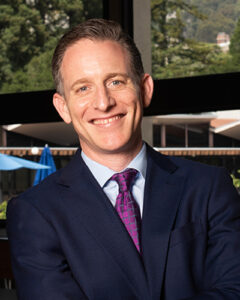 I couldn’t be happier to welcome you to this, one of the first programs of Cal Performances’ remarkable 2022–23 season. This month, we look forward to visits from gifted classical artists like violinist Maxim Vengerov and pianist Polina Osetinskaya; Baroque violinist Rachell Ellen Wong and her partners, cellist Coleman Itzkoff and harpsichordist David Belkovski; and harpsichordist and fortepianist Kristian Bezuidenhout. We’ll also welcome our own San Francisco Symphony back to UC Berkeley in a special concert especially appropriate for the Halloween season and featuring music director Esa-Pekka Salonen and piano soloist Bertrand Chamayou; as well as the brilliant Cloud Gate Dance Theatre of Taiwan with its breathtaking production of 13 Tongues. I’m proud to launch the season with programming that represents the finest in dance and classical music.
I couldn’t be happier to welcome you to this, one of the first programs of Cal Performances’ remarkable 2022–23 season. This month, we look forward to visits from gifted classical artists like violinist Maxim Vengerov and pianist Polina Osetinskaya; Baroque violinist Rachell Ellen Wong and her partners, cellist Coleman Itzkoff and harpsichordist David Belkovski; and harpsichordist and fortepianist Kristian Bezuidenhout. We’ll also welcome our own San Francisco Symphony back to UC Berkeley in a special concert especially appropriate for the Halloween season and featuring music director Esa-Pekka Salonen and piano soloist Bertrand Chamayou; as well as the brilliant Cloud Gate Dance Theatre of Taiwan with its breathtaking production of 13 Tongues. I’m proud to launch the season with programming that represents the finest in dance and classical music.
But this is just the start! From now until May 2023—when we close our season with the Bay Area premiere of Octavia E. Butler’s powerful folk opera Parable of the Sower and a highly anticipated recital with international dramatic soprano sensation Nina Stemme—we have a calendar packed with the very best in the live performing arts.
And what a schedule! More than 70 events, with highlights including the return of the legendary Vienna Philharmonic Orchestra under conductor Christian Thielemann (in his Bay Area debut); the beloved Mark Morris Dance Group in Morris’ new The Look of Love: An Evening of Dance to the Music of Burt Bacharach; the US premiere of revered South African artist William Kentridge’s astonishing new SIBYL; and a special concert with chamber music superstars pianist Emanuel Ax, violinist Leonidas Kavakos, and cellist Yo-Yo Ma. And these are only a few of the amazing performances that await you!
Illuminations programming this season will take advantage of Cal Performances’ unique positioning as a vital part of the world’s top-ranked public university. In the coming months, we’ll be engaging communities on and off campus to examine the evolution of tools such as musical instruments and electronics, the complex relationships between the creators and users of technology, the possibilities enabled by technology’s impact on the creative process, and questions raised by the growing role of artificial intelligence in our society.
This concept of “Human and Machine” has never been so pertinent to so many. Particularly over the course of the pandemic, the rapid expansion of technology’s role in improving communication and in helping us emotionally process unforeseen and, at times, extraordinarily
difficult events has made a permanent mark on our human history. Throughout time, our reliance on technology to communicate has—for better and worse—influenced how we understand others as well as ourselves. During this Illuminations season, we will investigate how technology has
contributed to our capacity for self-expression, as well as the potential dangers it may pose.
Some programs this season will bring joy and delight, and others will inspire reflection and stir debate. We are committed to presenting this wide range of artistic expression on our stages because of our faith in the performing arts’ power to promote empathy. And it is because of our audiences’ openness and curiosity that we have the privilege of bringing such thought-provoking, adventurous performances to our campus. The Cal Performances community wants the arts to engage in important conversations, and to bring us all together as we see and feel the world through the experiences of others.
Please make sure to check out our brochures and our website for complete information about upcoming events. We can’t wait to share all the details with you, in print and online.
Welcome back to Cal Performances!
Jeremy Geffen
Executive and Artistic Director, Cal Performances


